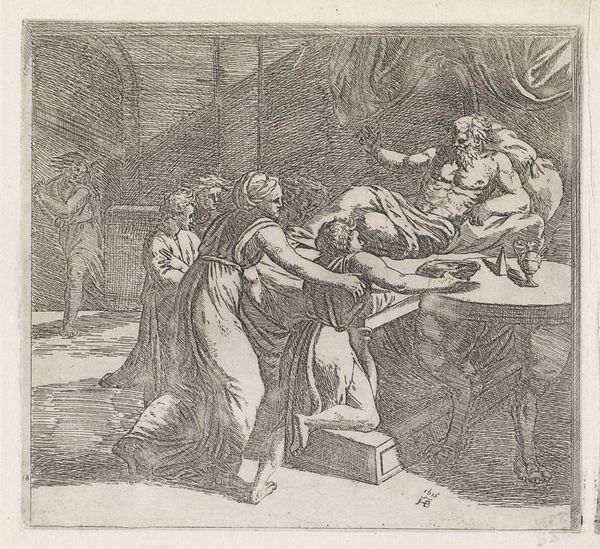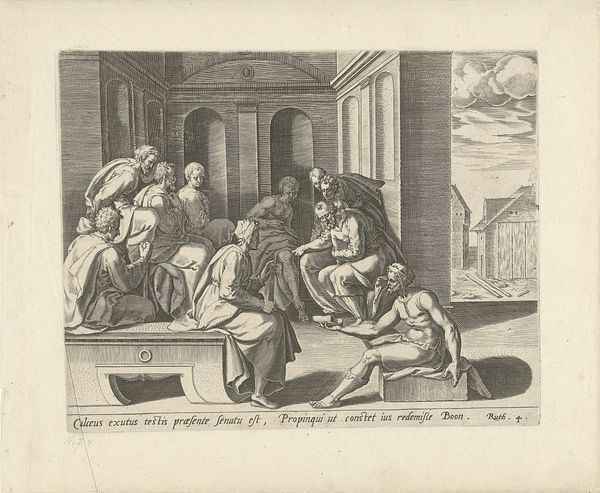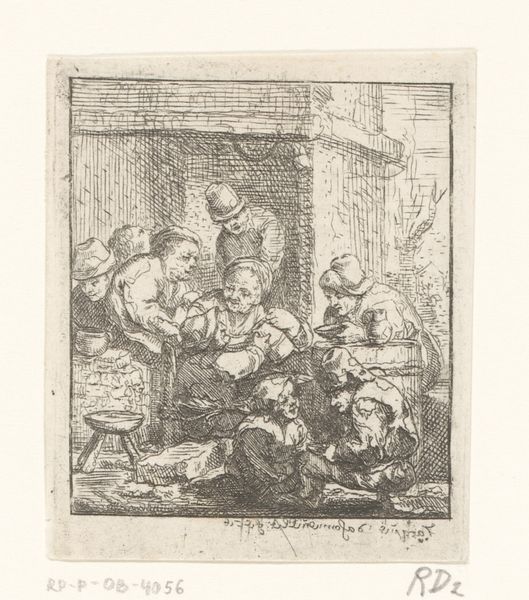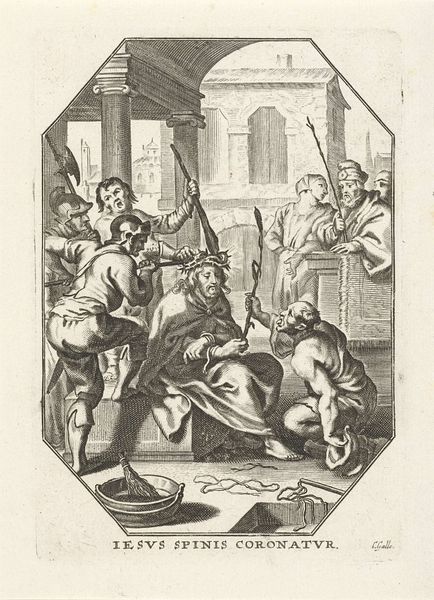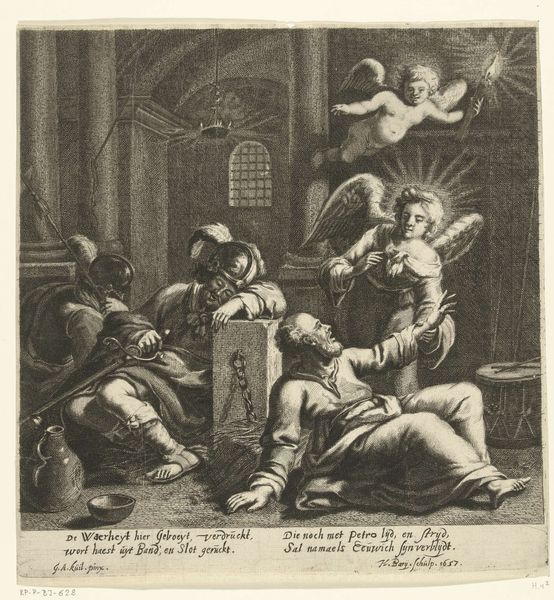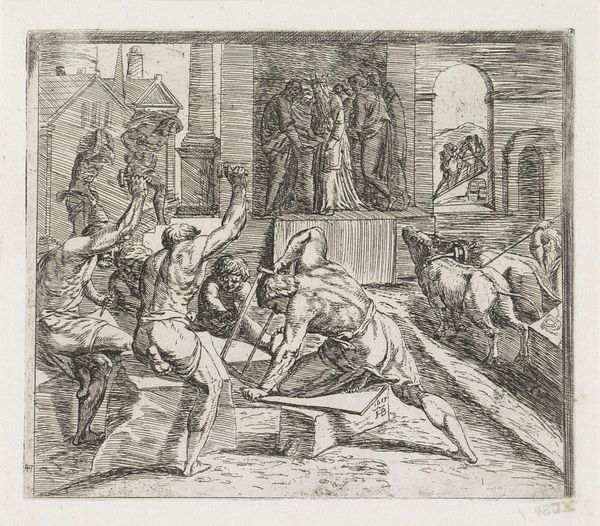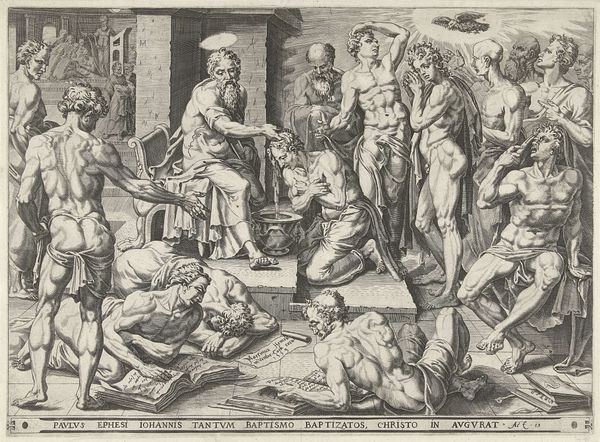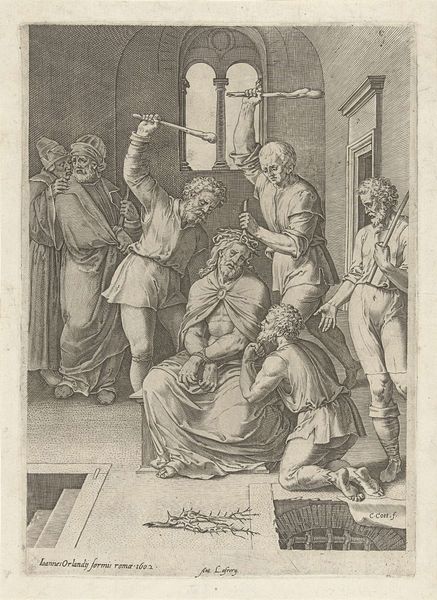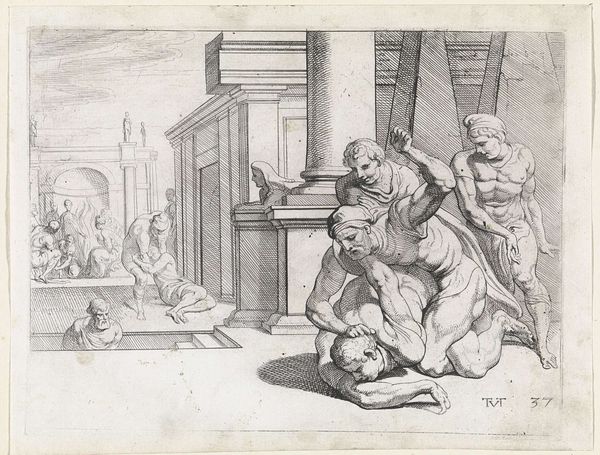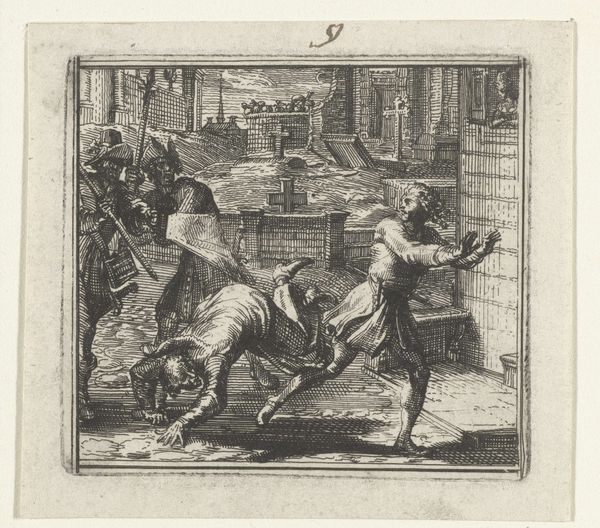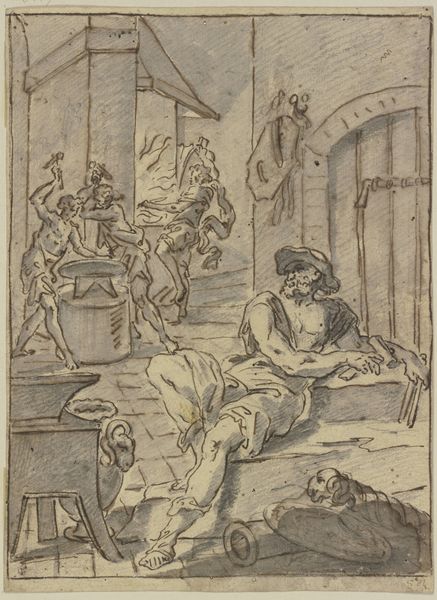
drawing, print, engraving
#
drawing
#
comic strip sketch
#
narrative-art
#
baroque
#
mechanical pen drawing
# print
#
pen sketch
#
old engraving style
#
figuration
#
personal sketchbook
#
pen-ink sketch
#
pen work
#
sketchbook drawing
#
history-painting
#
storyboard and sketchbook work
#
sketchbook art
#
engraving
Dimensions: height 74 mm, width 79 mm
Copyright: Rijks Museum: Open Domain
Editor: This engraving from 1697, "Illustratie voor de Decamerone van Boccaccio" by Romeyn de Hooghe, feels like a scene of complete chaos. It’s a flurry of figures seemingly in distress. What do you see in this piece, especially considering its historical context? Curator: Well, chaos can be incredibly revealing, can't it? De Hooghe, working in the late 17th century, positions this illustration within a long tradition of critiquing social mores through bawdy and unruly scenes. The *Decameron* itself was, of course, a product of its time, written in the wake of the Black Death. Given De Hooghe's political activism during the Dutch Golden Age, how might we read this image not just as illustrating Boccaccio, but also as a commentary on the political and social landscape of his *own* era? Editor: That’s a great point! I was so focused on the figures that I didn't consider that the artist’s world would naturally influence his work. So, beyond a general sense of upheaval, could this "chaos" represent something specific about the Dutch Golden Age? Curator: Precisely. Think about the rising merchant class, the often-tense relationships between religious and secular authorities, the anxieties surrounding wealth and morality...De Hooghe would have been acutely aware of these tensions. How do you think he visually encodes these power dynamics in his compositions? Does he give certain figures more prominence, or use the architecture to highlight certain inequalities, for example? Editor: Looking closer, the people scrambling out the window look richer than those beating the guy on the floor, based on their clothing. Almost like an escape of privilege? Curator: That's insightful! Now, let's think about the *Decameron's* framing narrative: a group escaping the plague. De Hooghe plays with this duality; characters attempt escape while social violence erupts indoors. In essence, De Hooghe asks us to think critically about who benefits, who suffers, and who is left behind amid societal turmoil. Editor: This gives me a totally new perspective. I initially saw it as just a busy illustration, but now I see how the artist used chaos to depict real social critiques. Curator: Exactly! Art provides a lens, albeit a subjective one, through which to interrogate the times in which it was produced. That's its real power, isn't it?
Comments
No comments
Be the first to comment and join the conversation on the ultimate creative platform.
